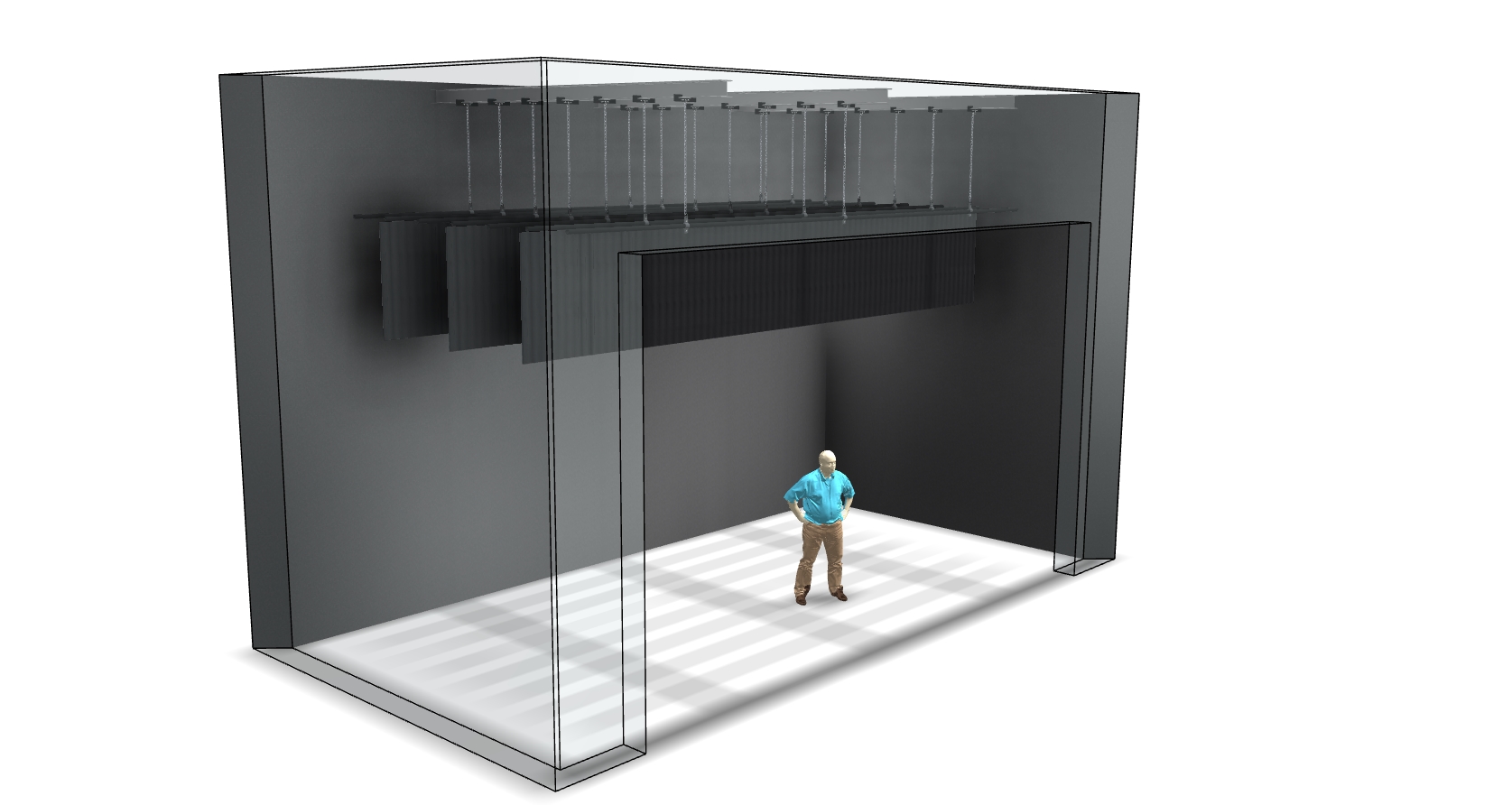Masking Curtains
Masking curtains are used to “mask” the stage. Masking curtains can be flat or pleated with fullness. Their size is usually determined by sight lines. Where theatrical performances take place they are usually black as they are meant to become “invisible” when the lights are dimmed. In school auditoriums where the stage is primarily used for band or choral performances, the masking can be of a more neutral color.
Typical fabrics include but are not limited to Velour (cotton or synthetic), Serge, or Commando Cloth.
Borders
Borders hide lights and other equipment above the stage. They are finished with
Legs / Side Curtains
Legs (or side curtains) hide off-stage areas and provide wings for entrances and side lights. Their size and location
Midstage-Travelers or Rear-Travelers
Midstage-Travelers or Rear-Travelers are used as stage dividers to create a smaller space or to hide equipment or backdrops near the back wall. They may consist of two panels with a center overlap and open to the sides. Or, depending on the available space, a traveler can be one panel and travel off stage on a curved track to one side. This is called a One-Way-Traveler.


